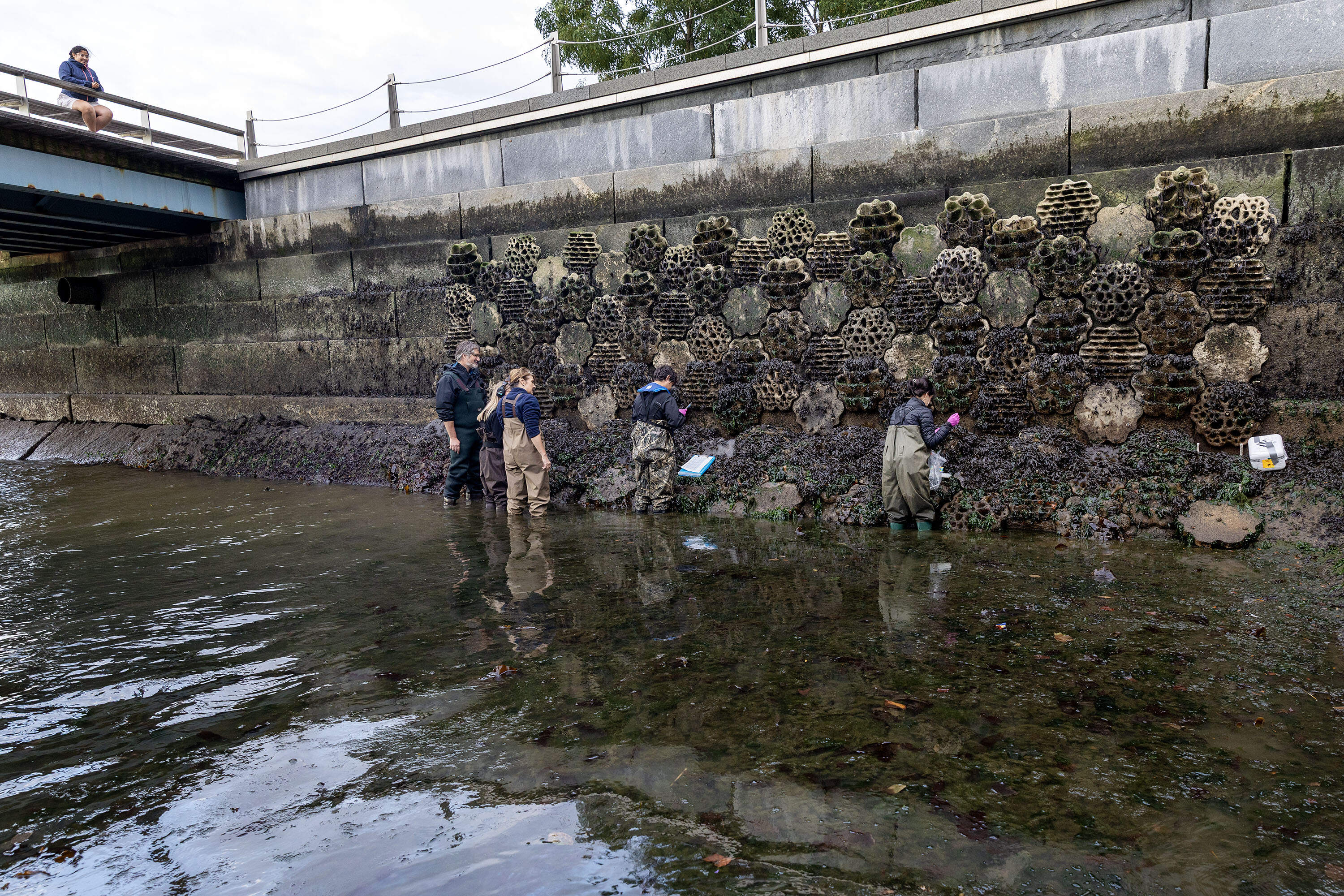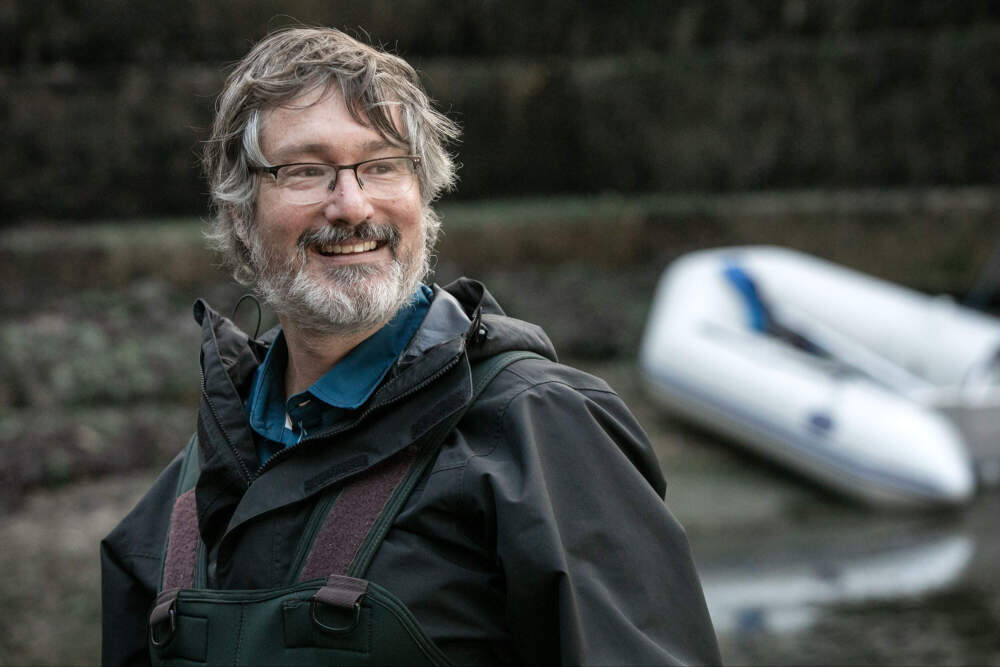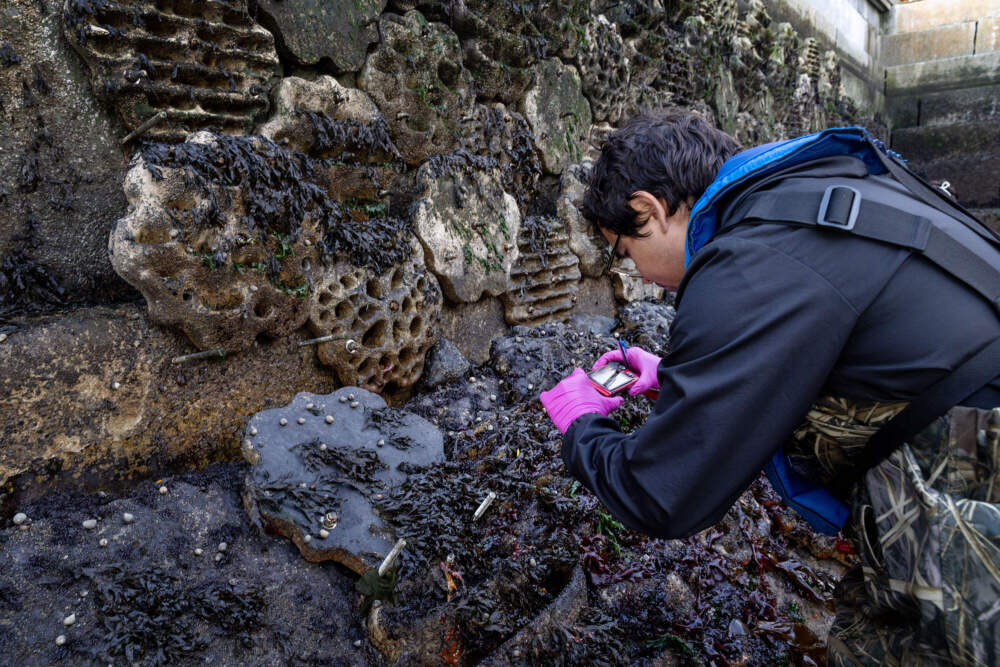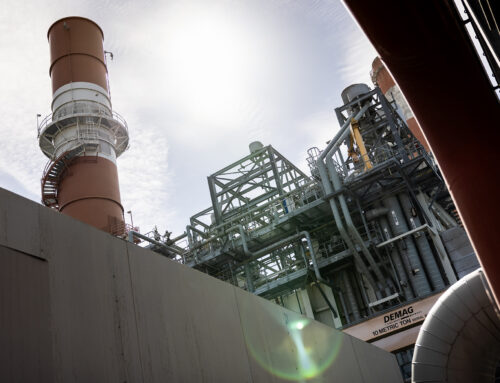One year in, sea creatures have turned the Seaport’s ‘living seawall’ into a home
October 28, 2025
Support WBUR

Nestled underneath the Boston Seaport’s ever-changing landscape of shops, offices and swanky restaurants is a science experiment.
For the past year, scientists with the Stone Living Lab at UMass have been watching sea creatures take over a previously flat, concrete wall. They encouraged it by installing snowflake-shaped panels, with nooks and crannies to mimic the natural features of the shoreline.
They’re called “living seawalls.”
“This project is incredibly exciting because it’s in some ways, pure discovery,” said Jarrett Byrnes, associate professor of biology at UMass Boston. “How does new life come in and colonize this new habitat? It’s really exciting. I never know what I’m going to see the next time I go out.”

Standing in knee-high water, Byrnes pointed to the distinct zones forming that match New England rocky intertidal habitats. At the bottom are kelp and red algae; in the middle, are brown fucus algae and rockweeds, and barnacles are near the top.
“ When I look at this, I see decades of research into the ecology of shores playing out right before my eyes,” he said. “It’s just stunning.”
Byrnes was particularly delighted to reach into a nook and find a single mussel. Mussels are in decline across the entire Gulf of Maine, so he didn’t expect to see any.
“This is a bigger guy, so it was probably washed in,” he said. But it’s promising it’s there because, “it sends a cue that it’s a good place and other mussels could be attracted to it.”

The flat, plain, concrete walls that exist on most coastlines are bad for marine life. They disrupt coastal ecosystems. But communities along the Massachusetts coast, like Boston, need those concrete walls to protect them from storms and floods. Living seawalls are part of the solution to protect people and nature. The wall in the Seaport is one of just two sites in all of North America, with the other in East Boston.
Byrnes and his students at UMass have been monitoring the wall over the last year, to see which plants and animals show up, and which of the five panel designs best support marine life. They installed cameras to track species’ movements, collected photo samples and took videos of organisms underwater. They plan to publish papers about what they’ve learned over the next two years.
Byrnes said he hopes the panels will be entirely covered within another year. But even if they’re not, the Seaport’s living seawall is an invaluable learning opportunity.
“We’re really curious about how winter is going to impact living seawalls, because if this is a scalable solution, then it needs to work everywhere.”

This segment aired on October 27, 2025. The audio for this segment is not available.
Search
RECENT PRESS RELEASES
Related Post




